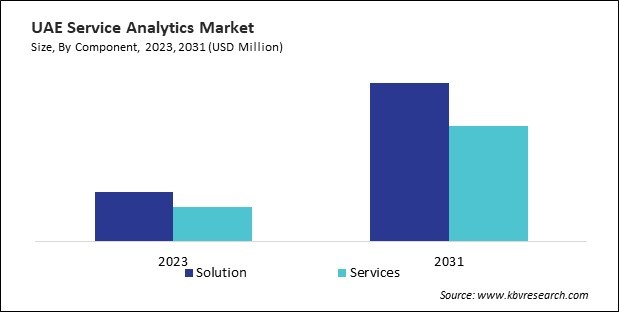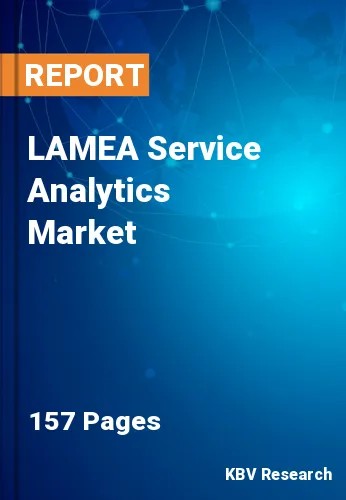The Latin America, Middle East and Africa Service Analytics Market would witness market growth of 17.3% CAGR during the forecast period (2024-2031).
The Brazil market dominated the LAMEA Service Analytics Market by Country in 2023, and would continue to be a dominant market till 2031; thereby, achieving a market value of $40.2 million by 2031. The Argentina market is capturing a CAGR of 18% during (2024 - 2031). Additionally, The UAE market would register a CAGR of 16.3% during (2024 - 2031).

Service analytics integrated with financial BI tools and ERP systems also provide valuable insights into cost-effectiveness and operational performance. Companies like Citibank use this integration to monitor the costs associated with customer support, ensuring a strong return on service investments. Similarly, General Electric combines service analytics with its ERP system to optimize maintenance services, predict equipment failures, and minimize downtime.
The rise of industry-specific applications for service analytics is another key trend shaping the market. Different sectors have unique service requirements, and analytics solutions are increasingly tailored to meet these needs. In healthcare, service analytics is used to streamline patient care processes, optimize hospital resource allocation, and improve patient satisfaction through better communication and service delivery. In retail, service analytics helps companies manage inventory levels, predict customer demand, and enhance the in-store and online shopping experience. In manufacturing, service analytics is applied to monitor equipment performance, reduce downtime, and optimize supply chain operations.
In South Africa, the healthcare sector increasingly turns to service analytics to improve patient care and manage healthcare resources more efficiently. According to the World Bank, South Africa's healthcare expenditure reached approximately 8.27% of GDP in 2021. The country’s healthcare system, both public and private, faces challenges such as high patient volumes and limited resources, making analytics critical for optimizing service delivery.
The South African government has launched initiatives like the National eHealth Strategy, which supports using digital technologies to improve healthcare services nationwide. Service analytics tools allow healthcare providers to analyze patient data, monitor care quality, and improve resource allocation, ultimately enhancing the patient experience and contributing to better healthcare outcomes nationwide. Hence, various policies to enhance digital infrastructure and promote innovation by region’s governments support the adoption of service analytics.
Free Valuable Insights: The Worldwide Service Analytics Market is Projected to reach USD 2.0 Billion by 2031, at a CAGR of 14.7%
Based on Enterprise Size, the market is segmented into Large Enterprises, and SMEs. Based on Component, the market is segmented into Solution, and Services. Based on Deployment, the market is segmented into Cloud, and On-premise. Based on Application, the market is segmented into Customer Service Analytics, IT Service Analytics, and Field Service Analytics. Based on End Use, the market is segmented into BFSI, IT & Telecom, Retail, Healthcare, Manufacturing, Government, and Other End Uses. Based on countries, the market is segmented into Brazil, Argentina, UAE, Saudi Arabia, South Africa, Nigeria, and Rest of LAMEA.
By Enterprise Size
By Component
By Deployment
By Application
By End Use
By Country
Our team of dedicated experts can provide you with attractive expansion opportunities for your business.

